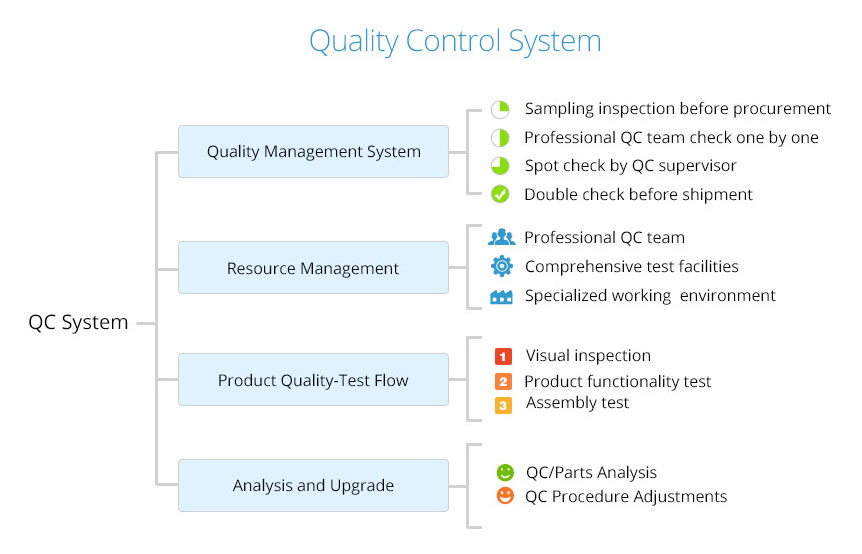Quality Control System


HOW WE TEST
-
Visual Inspections
Qualified Standard:- No scratches or damages.
- No missing parts, such as screws or adhesives.
-
Functional Tests (Touch Screen Test)
Tools Needed:- LCD and Touch Screen Tester.
- Built-in test application (for Android phones only).
- Tester Test Standard: Draw diagonal straight lines on the screen. The lines should appear without any misalignment, breakage, or distortion.
- Application Test Standard: The software should indicate a pass.
-
Functional Tests (Small Parts Tests)
Tools Needed:- Relevant OEM Test Modules.
- Other related devices, such as earpiece (for audio flex test), data cable and charger (for charging port test), multimeter (for tests on loudspeaker, ear speaker, and vibrating motor).
- Module Test Standard: The parts should function normally.
- Multimeter Test Standard:
- Loudspeaker resistance should be between 6~10 ohms.
- Ear speaker resistance should be between 27~32 ohms.
- The vibrating motor should vibrate or rotate when supplied with 1.5~4.2V DC power.
-
Functional Tests (LCD Display Test)
Tools Needed:- LCD and Touch Screen Tester.
- Built-in test application (for Android phones only).
- Tester Test Standard: No more than 2 dead pixels (pixel diameter must be less than 0.15mm).
- Application Test Standard: The software should indicate a pass.
-
Functional Tests (Battery Test)
Tools Needed:- Multimeter.
- DC Power Supply.
- Probe Leads.
- Voltage Standard: 3.7V.
- Normal Charging Standard: The multimeter should display the correct charging value.
- Normal Discharge: The device should power on normally after assembly.
-
Assembly Tests
Tools Needed:- Screwdriver.
- Tweezers.
- Other related devices, such as RF Test Equipment, NFC Test Device.
- The assembly should work normally on OEM Test Modules.
- There should be no cosmetic or functional incompatibility on OEM Test Modules.
Quality Guaranteed through Our Industry-Leading QC Standard
Latest update: November 19, 2024
